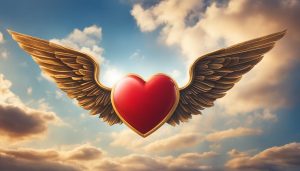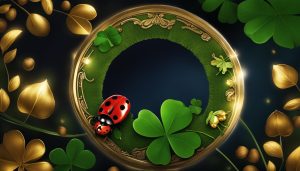Emojis have become an integral part of communication in the digital age, with each symbol carrying its own meaning. In this guide, we will delve into the world of emojis for good luck and explore the various symbols associated with bringing good fortune. From the significance of using emojis correctly to the hidden meanings behind popular lucky emojis, we will provide you with all the information you need to enhance your messages with a sprinkle of good luck.
Contents
Key Takeaways:
- Emojis play a significant role in digital communication, each symbol carrying its own meaning.
- Understanding the correct usage and hidden meanings behind emojis is crucial for effective communication.
- Lucky emojis hold a special place in digital communication, symbolizing good luck and positive vibes.
- Exploring the cultural significance and history behind lucky emojis adds depth to their use.
- Adding lucky emojis to your messages can enhance engagement and create a more positive experience.
The Importance of Understanding Emoji Meanings
Emoji meanings are not always straightforward, and understanding the nuances behind each symbol is crucial for effective communication. While emojis have literal meanings, they often have secondary meanings that evolve over time. By familiarizing yourself with emoji meanings, you can avoid potential miscommunication or embarrassment when using them. We will provide you with a comprehensive guide of emoji meanings to ensure you use them accurately and appropriately.
Emojis have become a universal language, transcending borders and cultural barriers. However, their meanings can vary depending on the context and the cultural background of the sender and receiver. For example, the thumbs-up emoji is commonly used to signify approval or agreement in Western cultures. However, in countries like Greece, the thumbs-up gesture is considered offensive. By understanding the cultural nuances associated with emojis, you can tailor your messages accordingly and avoid any unintended offense.
Moreover, emojis can have multiple interpretations or hidden meanings. For instance, the eggplant emoji is often used to represent something entirely different than its literal meaning. It has become a symbol for something more explicit or suggestive. These secondary meanings can change over time as they are shaped by popular culture and online communities. By keeping up with the latest emoji trends and understanding their evolving meanings, you can use emojis in a way that resonates with your intended audience.
Lastly, using emojis correctly can also enhance the emotional impact of your messages. Emojis add a layer of expression and personality to digital communication that plain text often lacks. When used appropriately, emojis can convey emotions such as joy, sadness, or sarcasm, helping to build rapport and strengthen connections with others. However, using emojis out of context or incorrectly can lead to confusion or misinterpretation. By understanding emoji meanings, you can use them effectively to enhance the tone and sentiment of your messages.
| Emoji | Meaning |
|---|---|
| Understanding the nuances and hidden meanings behind emojis is crucial for effective communication. | |
 |
Using emojis correctly can enhance the emotional impact of your messages. |
 |
Emojis can have multiple interpretations and hidden meanings that evolve over time. |
Exploring the Emoji Meanings for Good Luck
Emojis associated with good luck hold a special place in digital communication. These symbols have the power to convey positive energy and invoke feelings of luck and fortune. Whether you’re sending a message of encouragement or hoping for good luck yourself, understanding the meanings behind lucky emojis can add depth and intention to your communications. Let’s explore some popular lucky emojis and their significance:
The Grinning Face Emoji 😁
The grinning face emoji with smiling eyes 😁 is often used to express joy and optimism. It represents a positive mindset and can be seen as a symbol of good luck. By using this emoji, you can share your positive vibes and wish others the best of luck in their endeavors.
The Four-Leaf Clover Emoji 🍀
When it comes to symbols of luck, the four-leaf clover emoji 🍀 is a classic choice. In many cultures, finding a four-leaf clover is believed to bring good fortune. By incorporating this emoji into your messages, you can send a heartfelt wish for luck and prosperity to those you care about.
The Horseshoe Emoji 🐴
Another popular lucky emoji is the horseshoe emoji 🐴. Horseshoes have long been associated with good luck and protection against evil spirits. This emoji can be used to wish someone well in their endeavors or to express your own hopes for a stroke of luck in the future.
By understanding the meanings behind these lucky emojis and incorporating them into your messages, you can infuse your digital communication with positive energy and well wishes. Remember, the power of emojis lies in their ability to convey emotions and sentiments beyond words. So go ahead and use these lucky emojis to spread good luck and share positive vibes with those who matter to you.

| Emoji | Meaning |
|---|---|
| The Grinning Face Emoji 😁 | Represents joy, optimism, and good luck |
| The Four-Leaf Clover Emoji 🍀 | Symbolizes luck, prosperity, and good fortune |
| The Horseshoe Emoji 🐴 | Associated with protection and wishes for good luck |
The History and Cultural Significance of Lucky Emojis
Lucky emojis have a fascinating history that is intertwined with cultural traditions and beliefs. Understanding the origins and cultural significance of these symbols adds depth and meaning to their use in digital communication. Let’s explore the rich history and cultural context behind some of the most popular lucky emojis.
Horseshoe Emoji
The horseshoe emoji is widely recognized as a symbol of good luck. Its association with luck traces back to ancient times when horseshoes were believed to ward off evil spirits. In many cultures, hanging a horseshoe with the ends pointing upward is considered lucky, as it is believed to catch and hold good luck. The horseshoe emoji serves as a digital representation of this age-old symbol, allowing users to convey wishes of good fortune to others.
Ladybug Emoji
The ladybug emoji is another symbol associated with luck and is commonly used to represent good fortune and protection. Ladybugs have long been regarded as harbingers of luck in various cultures around the world. The vibrant red color of the ladybug, combined with its gentle nature and harmless presence, has earned it a special place in folklore and traditions. Sending the ladybug emoji can be a way to send positive vibes and best wishes to someone.
Shooting Star Emoji
The shooting star emoji has a magical allure and is often associated with wishes and dreams coming true. It represents the fleeting beauty of a shooting star streaking across the night sky, captivating hearts and inspiring hope. This emoji symbolizes the power of aspirations and encourages users to believe in the power of their dreams. Adding the shooting star emoji to your messages can bring a touch of wonder and optimism to your conversations.
| Lucky Emoji | Symbolism |
|---|---|
| Horseshoe Emoji | Warding off evil spirits and capturing good luck |
| Ladybug Emoji | Representing good fortune and protection |
| Shooting Star Emoji | Symbolizing wishes and dreams coming true |
By understanding the history and cultural significance of lucky emojis, you can use them with a deeper appreciation and intention. Whether you’re wishing someone luck, expressing positive vibes, or simply adding a touch of whimsy to your messages, these symbols carry layers of meaning that transcend their digital form. So go ahead and sprinkle some luck into your conversations with these emojis, and may good fortune be with you!
Enhancing Your Messages with Lucky Emojis – Conclusion
Adding lucky emojis to your messages can bring a touch of positivity and good luck, while also enhancing engagement and creating a more enjoyable experience for your recipients. Now that you have a comprehensive understanding of lucky emojis, it’s time to put that knowledge into practice and start using them to enhance your digital communication.
Whether you want to wish someone good luck, share positive vibes, or invoke good fortune for yourself, lucky emojis can elevate your messages and make them more memorable. Choose from a range of lucky symbols, such as the horseshoe emoji, the four-leaf clover emoji, or the shooting star emoji, to add that special touch of positivity to your conversations.
Remember, the correct use of lucky emojis can have a powerful impact on your communication. By sprinkling some good luck in your messages, you not only convey your intentions but also create a connection with your recipients. Whether it’s a personal message, a business email, or a social media post, don’t hesitate to enhance your messages with lucky emojis and watch the positive impact they have on your conversations.
So go ahead, start using lucky emojis in your messages today! Whether you’re adding them for fun, to wish someone well, or to attract positive energy, lucky emojis are a simple yet effective way to enhance your digital communication and create a more engaging experience for both you and your recipients.
FAQ
What is the meaning of an emoji for good luck?
An emoji for good luck is a symbol that is believed to bring positive vibes and invoke good fortune. These emojis are used to convey well-wishes, share positive energy, or bring luck to oneself or others.
How can I understand the meanings of emojis?
Understanding emoji meanings requires familiarity with their literal definitions as well as their evolving secondary meanings. By staying updated on emoji usage and cultural references, you can better interpret the nuances behind each symbol.
Which emojis are associated with good luck?
Emojis associated with good luck include the grinning face emoji, the four-leaf clover emoji, the horseshoe emoji, the ladybug emoji, and the shooting star emoji. Each of these symbols holds its own significance and is commonly used to represent luck or positive outcomes.
Are lucky emojis culturally significant?
Yes, lucky emojis often have a rich history and cultural significance. For example, the shamrock emoji is closely associated with Ireland and is commonly used during St. Patrick’s Day celebrations. Understanding the cultural context and symbolism behind lucky emojis adds depth to their use.
How can adding lucky emojis enhance my messages?
Adding lucky emojis to your messages can bring a touch of positivity and good luck while also enhancing engagement. Using these symbols can create a more engaging experience for your recipients and convey your well-wishes or desire for good fortune.





